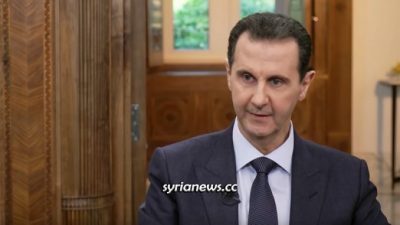The “Fall of Assad”: A Strategic Retreat, Not a Defeat?

The recent developments in Syria, marked by what many describe as the “fall of Assad,” are far from the final chapter in the conflict. Contrary to popular narratives of capitulation, the departure of Assad’s forces from Damascus is better understood as a calculated maneuver forged through exhaustive consultations between the Syrian government and its Russian allies. Rather than signaling a surrender, this retreat reflects a tactical strategy aimed at regaining control over Syria in the long term.
The Strategic Context
Syria’s complex conflict has been shaped by the involvement of numerous insurgent groups, many of which receive backing from the United States and Israel. These groups have rendered the political and military landscape perilously constricted for Assad’s government. Under such conditions, fighting entrenched enemies within a heavily contested Damascus would risk further fragmentation and depletion of loyalist forces. Instead, stepping back creates an opportunity to regroup and strengthen Assad’s defenses.
This retreat allows Assad’s government to escape the tight space carved out by terrorist factions and consolidate its resources. By shifting focus outside Syria, loyalist forces gain room to rearm, reorganize, and prepare for future offensives. Historically, such strategic withdrawals have proven to be effective precursors to counterattacks, especially when they allow forces to strike from unexpected directions.
Lessons from History
The dynamic unfolding in Syria is reminiscent of other geopolitical contexts where external backers of insurgent governments ultimately lose interest. The United States’ diminished commitment to Afghanistan after decades of involvement offers a cautionary tale. A similar scenario is plausible in Syria, where the Islamist government, now supported by U.S. and Israeli resources, could face abandonment as those nations turn their focus inward due to their own protracted conflicts.
Israel’s ongoing battles with Hamas and Hezbollah, coupled with the United States’ embroilment in Ukraine alongside its NATO allies, strain both nations’ military and economic capacities. These pressures suggest a likely reduction in their ability or willingness to sustain the Islamist government in Syria over the long term. Assad’s strategy appears to hinge on this eventuality.
A Calculated Pause
The current lull is part of a longer game. Assad’s forces—and their Russian allies—are buying time to evaluate their enemies, regroup, and strengthen. When regional tensions ease and external backers waver, the conditions will be ripe for a counteroffensive. In this scenario, Assad’s forces can capitalize on the weakened resolve of their opponents to reclaim Syrian territory and governance.
While the present Islamist government’s grip on power might seem secure, its foundation is precarious. Its reliance on foreign sponsorship leaves it vulnerable to shifts in global priorities and alliances. Assad’s strategic withdrawal is an acknowledgment of this reality and a preparation for the opportune moment to strike back.
The Road Ahead
Assad’s retreat should not be mistaken for resignation. Instead, it’s a calculated response to a battlefield that has been reshaped by external forces and internal chaos. The consolidation of loyalist forces outside Syria’s borders is a clear indication of intent: a determination to outlast the insurgent government and to reclaim Syria when the conditions are favorable.
The current Islamist regime may appear victorious for now, but history and geopolitical trends suggest that its position is far from secure. When the balance of power shifts, Assad’s forces will likely seize the opportunity to return—this time, with the advantage.
Conclusion
The so-called “fall of Assad” is not the end but a strategic pause. It’s a move calculated to ensure survival, preparation, and eventual resurgence. As external backers of the Islamist government become preoccupied with other conflicts and priorities, the stage will be set for Assad’s forces to reclaim their position. This conflict is far from over, and its final outcome may yet redefine the region once again.
*
Click the share button below to email/forward this article to your friends and colleagues. Follow us on Instagram and Twitter and subscribe to our Telegram Channel. Feel free to repost and share widely Global Research articles.
Global Research’s Holiday Fundraiser
Prof. Ruel F. Pepa is a Filipino philosopher based in Madrid, Spain. A retired academic (Associate Professor IV), he taught Philosophy and Social Sciences for more than fifteen years at Trinity University of Asia, an Anglican university in the Philippines. He is a regular contributor to Global Research.
Order Mark Taliano’s Book “Voices from Syria” directly from Global Research.
**Voices from Syria**
Author: Mark Taliano
ISBN Number: 978-0-9737147-9-1
Year: 2017
Product Type: PDF File
List Price: $6.50


